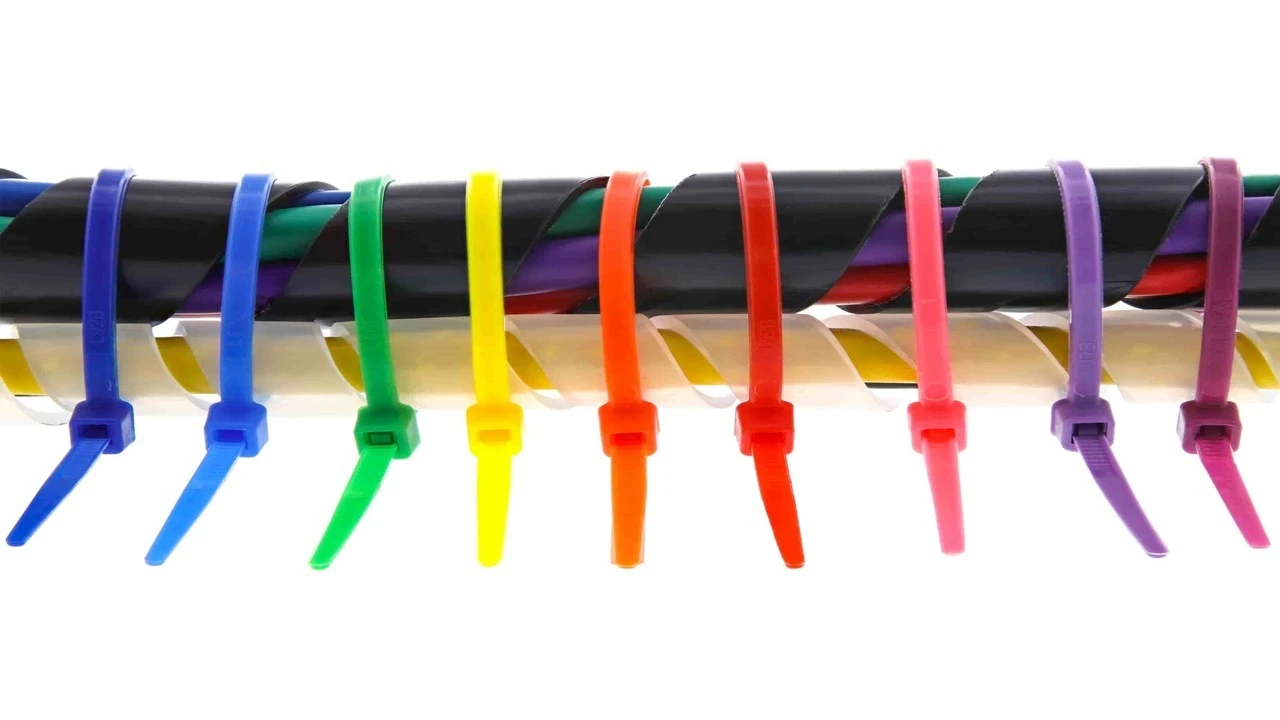
Cable management is an essential aspect of maintaining organized and efficient systems, particularly in technical and industrial settings. Using color-coded cable ties can streamline this process remarkably. These ties come in various colors, including green, red, yellow, and blue, enabling easier identification and classification of cables. Whether you're working with plastic tie cables, cable tie mounts, metal cable ties, or nylon cable ties, color-coded solutions offer a practical way to improve cable organization.
Benefits of Using Colour Coded Cable Ties
Utilizing color-coded cable ties in your systems offers several advantages:
Improved Organization: Categorizing cables based on their functions using colored cable ties enhances the organization. For instance, green cable ties can be used for data cables, while red cable ties can signify power lines, providing a quick visual guide.
Enhanced Safety: By differentiating cables using color, you can significantly reduce the chances of errors and mishaps. Color coding allows technicians to quickly identify and handle cables correctly, thereby enhancing the system's safety.
Efficiency in Maintenance: Implementing colored cable ties ensures that your maintenance team can easily locate and work on specific cables, minimizing downtime and improving efficiency.
Aesthetic Appeal: Well-organized and color-coded cables give systems a neat appearance, which can be crucial in professional environments or customer-facing setups.
Types of Colour Coded Cable Ties
There is a diverse range of color-coded cable ties available to suit different needs, from maintenance to large-scale industrial projects:
Plastic Cable Ties: These are the most common and versatile, suitable for various applications, including tying cables in indoor settings.
Nylon Cable Ties: Known for their durability and strength, nylon cable ties are perfect for environments where the ties might be subjected to higher stress or temperature variations.
Colored Cable Ties: Colored options include green, red, yellow, and blue, each serving specific purposes as outlined below. Using a diverse array of color cable ties helps in identifying and categorizing cables conveniently.
Green cable ties
Green cable ties are often utilized for grounding or data cables, signifying environmental connections. These plastic cable ties are reliable and durable, ensuring your cables remain securely fastened. By using green cable ties, you can easily identify the cables responsible for grounding or environmental monitoring. Incorporating green ties into your setup can greatly enhance organization and clarity, especially in complex systems.
Red cable ties
Red cable ties typically denote power lines or critical circuits. Red ties offer a visual alert for high-risk or high-importance cables, helping prevent accidental disconnections. This makes them invaluable in scenarios where safety and clarity are paramount. Using red plastic cable ties ensures that these vital cables stand out, contributing to a more efficient and safer working environment.
Yellow cable ties
Yellow cable ties can be used to indicate caution. Their bright color makes them ideal for marking cables that should be handled with care, such as those carrying sensitive data. Yellow cable ties are also useful in alerting technicians to cables that require special attention during maintenance or repairs. Utilizing yellow ties enhances both safety and operational efficiency by clearly marking critical cables.
Blue cable ties
Blue cable ties are frequently used for network cables. Using blue tie cables makes the identification process straightforward, aiding in quicker resolutions for any connectivity issues. These ties are essential in environments with extensive networking setups, providing a clear and organized cable management system. Blue cable ties also contribute to minimizing downtime by ensuring quick and effective cable identification.
How to Implement Colour Coded Cable Ties in Your System
Implementing color-coded cable ties into your environment can be conducted systematically for maximum efficiency:
Assessment: First, evaluate the types and quantities of cables you need to manage. Understanding your system's specific needs will aid in selecting appropriate cable tie mounts and ties.
Planning: Determine the color coding strategy you will use. For example, assign specific colors for different cable categories such as green for data, red for power, etc.
Execution: Apply the selected colored cable ties consistently throughout your setup. Use nylon cable ties or metal cable ties according to the cable's properties and environmental conditions. Consistent application ensures that your cable management strategy is effective and easy to follow. This method not only helps in organizing cables but also simplifies maintenance activities.
Tips for Selecting the Right Cable Ties
When choosing cable ties (cable ties and more), consider the following tips to ensure you make the right selections:
Material: Opt for plastic cable ties for general use, but for tougher environments, stainless cable ties or metal cable ties might be more suitable.
Size: Make sure you select cable ties that are appropriate for the diameter and bundle size of the cables they will manage.
Durability: For outdoor or harsh environment applications, choose cable ties known for their weather resilience like nylon or stainless options.
Color Variety: Select a range of colors (e.g., green, red, yellow, blue) to cover all necessary categorization effectively. Choosing cable ties with color can make identification more intuitive.
Purpose: Consider the specific application the cable ties will be used for, such as whether they will need to resist extreme temperatures or support heavier loads.